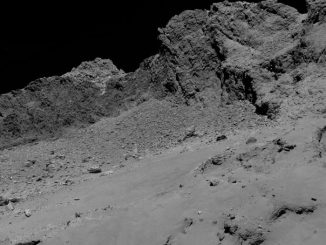Rosetta mission scientist Matt Taylor says the science team is jubilant after the Philae lander captured the historic, first close up images of the surface of a comet and began returning data from its science instruments.
Related Articles

Live coverage: Rosetta’s final hours
Europe’s Rosetta spacecraft will close out a historic 4.9-billion-mile journey Friday with a slow-speed crash into the nucleus of comet 67P/Churyumov-Gerasimenko, the tiny world it has studied for the last two years, capturing some of the mission’s best science data to help unravel the inner workings of the comet. Confirmation of the crash landing should arrive on Earth around 1218 BST.

Top ten Rosetta images from 10km

Astronomers recall discovery of Phaethon — source of Geminid meteors
The beautiful Geminid meteor shower is due to light up the heavens this weekend, but the source of the enigmatic cosmic display had eluded stargazers for more than 120 years. Then, in 1983, two University of Leicester astronomers — Dr. Simon Green and Dr. John Davies — used data from the IRAS satellite to discover 3200 Phaethon, an asteroid with a very unusual orbit.
